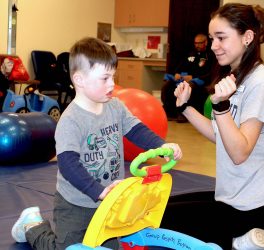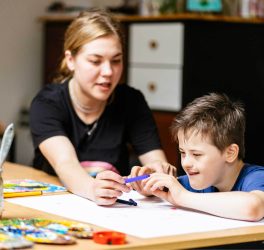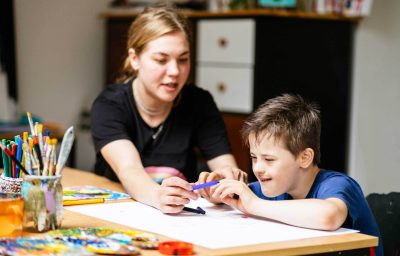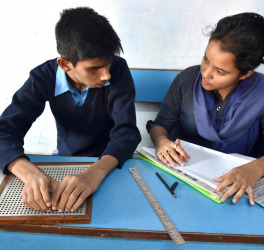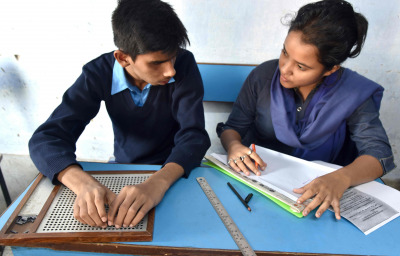
In recent decades, the number of university students with some kind of disability has been progressively increasing due to the more favorable social environment. Despite this progress, these students still face numerous challenges in the academic world.
Now, a study by researchers at the Universitat Oberta de Catalunya (UOC), published in open access in the International Journal of Educational Research, has explored the experiences of students with disabilities at an online university—the UOC—to understand the potential and possible shortcomings of this form of education.
“Disclosure of one’s disability in the field of higher education is a necessary first step to able to access the academic adaptations to which this group of students is entitled by law, and this is a process that academic literature has identified as being key to achieving effective equal opportunities for this disadvantaged group,” noted the work’s authors, Efrem Melián, doctoral student in Education and ICT at the UOC, and Julio Meneses, associate professor of Research Methodology at the UOC’s Faculty of Psychology and Education Sciences, director of Learning Analytics at the eLearning Innovation Center (eLinC) and researcher at the IN3’s Gender and ITC (GenTIC) research group.
With its completely online education model, the UOC hosts a significant proportion of Spain’s students with disabilities. Across all the country’s universities, more than 23,000 people are students with some kind of disability. Specifically, close to 2,000 students with some kind of disability study at the UOC, which is one of the highest proportions.
“The UOC is the Spanish university with the second-highest number of students with disabilities, only behind the country’s National University of Distance Education (UNED). So, that’s a lot of people with a very wide range of needs, meaning that the complexity of supporting these students often leads to a degree of tension in help services,” said Melián.
The dilemma of disclosure
People with disabilities face an ongoing dilemma throughout their education experience, as they have to disclose their disability to the university in order to obtain academic adaptations, but they also expose themselves to emotional risks. The decision to disclose a disability entails recurring negotiation every semester, for every course, with a number of agents such as university support and teaching staff. “As the students explained to us, this isn’t a straightforward process nor is its outcome predictable. What’s more, it often constitutes a barrier to disclosing a disability,” said the experts.
Furthermore, it must be remembered that there are many kinds of disabilities, some apparent, such as physical and sensory ones, and others hidden (like mental disorders and learning challenges). “Every student has different needs. While students with apparent disabilities emphasize self-sufficiency and normalization of their presence at the university as students with acknowledged rights, those with hidden disabilities (like mental disorders and learning challenges), focus on avoiding stigma and increasing credibility,” said Melián.
For example, students with some kind of mental or learning disorder are more afraid of being labeled, of thinking that others don’t believe that the needs they explain are true and of having to work harder to be taken into account and obtain official certification of disability.
“In short, many students try to avoid stigmatization by staying invisible, not standing out and not disclosing their disability. However, this often has negative consequences as, if they don’t disclose their status, they can’t access the adaptations they need, or do so too late, which has a negative impact on their academic results,” revealed the UOC researchers.
Given this situation, we need to avoid focusing on disability from a purely medical perspective, which often uses terms like “pathologies” and “patients” and which tends to make the students internalize responsibility. From a social model standpoint, what is happening with these students is that the environment doesn’t accommodate their needs and it is actually this that ‘disables’ people.
Therefore, the authors stress that what is important is for the learning environment to be inclusive and to welcome everyone, adopting universal measures and, when these are not sufficient, implementing individual adaptations.
“The consequences of the lack of awareness, of sensitivity and proper services for these people are associated with the ‘withdrawal’ of students with disabilities. In other words, in such a situation, students may choose to go unnoticed or become invisible to the university,” affirmed the authors.
So, to improve the academic experience of people with disabilities, universities need to show a firm commitment to educational inclusivity for everyone, whatever their personal circumstances, a shift that has been greatly boosted by the demands of the pandemic.
“The COVID-19 crisis has accelerated the migration towards partially or fully online models in many universities. In the meantime, students with disabilities are increasingly choosing such institutions due to the accessibility of the campus or to the materials they offer, as well as the flexibility around the pace of studying. This is both an opportunity and a challenge for institutions implementing distance learning models,” added Meneses.
The researchers provide a series of recommendations to improve the services universities provide for students with disabilities. Firstly, they need to streamline and simplify procedures for disclosure of disabilities to the institution by students, to avoid them having to repeatedly disclose them over the course of their studies.
Secondly, it is necessary to provide personalized support and follow-up sensitive to the needs associated with different kinds of disabilities. Such services could be provided by establishing a specific disability services department, as some distance universities have done.
“Universities need to reorient support for students with disabilities by developing a long-term institutional policy encompassing the actions of a specific service that provides active and personal support and follow-up. In this regard, the UOC’s efforts to improve these people’s experience can be of significant help in tackling the wide range of student needs and act as an example when dealing with the challenges involved in the progressive adoption of hybrid or online education models by universities,” concluded the experts.
The research was published in the International Journal of Educational Research.

